Recent Posts
-
IDR 650K
Per Person
Lempuyang Temple Bali Tour
Welcome to our Lempuyang Temple Bali Tour, a journey that will lead you past some of Bali’s most beautiful and famous sites. Our one-day tour package is made to provide you with a memorable experience that is packed with excitement, relaxation, and stunning surroundings.
Join Lempuyang Temple Bali Tour, also referred to as the “Gateway to Heaven,” and take a picture of you appearing to be heading upward with the spectacular Mount Agung in the background. The Tirta Gangga Water Palace, a magnificent royal residence with a labyrinth of ponds, fountains, and statues encircled by beautiful gardens, as well as the Tukad Cepung Waterfall, a hidden gem nestled away in a cave-like environment, will also be on our itinerary.
You will be led during the tour by one of our knowledgeable and personable tour guides, who will also make sure that you are secure and comfortable while giving you explicit consideration of Bali’s history and culture.
This Lempuyang Temple Bali Touris ideal for anyone seeking an adventure that combines Bali’s natural beauty and its extensive cultural legacy. So come and join Lempuyang Temple Bali Tour for a day that will leave you with lifelong memories that are truly unforgettable.
Place to Visit
Lempuyang Temple (Gate of Heaven)
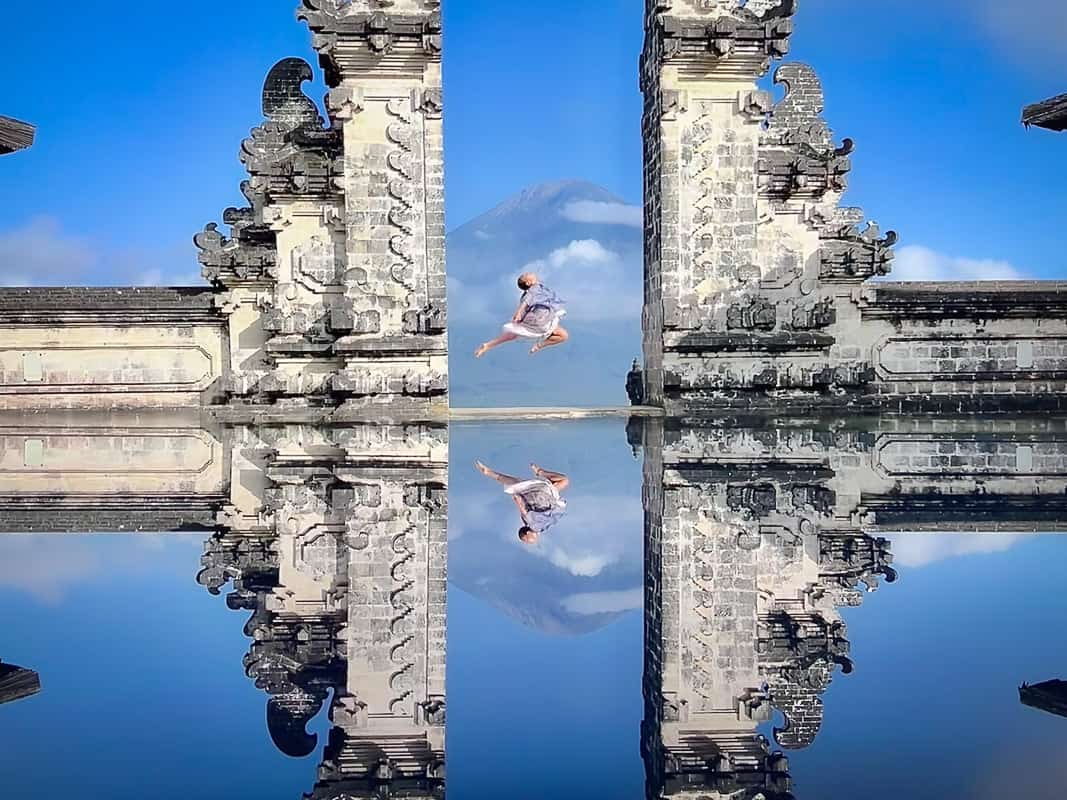
The complex of Balinese Hindu temples known as Lempuyang Temple is situated in East Bali, Indonesia. It is also referred to as Pura Lempuyang Luhur or the Gate of Heaven. It is located at an elevation of 1,175 meters above sea level on the slope of Mount Lempuyang and provides breathtaking views of the nearby hills and mountains.
Seven temples make up the complex, each of which is located on a different level and connected by a flight of stairs that leads to the main temple at the summit. Three imposing split gates, known as Candi Bentar and considered the entryway to the sacred sanctuary, mark the transition from the outside world to the inner realm of the gods in the main temple.
The Gate of Heaven, which is situated at the top of the stairs leading to the main temple, is the most well-known aspect of the Lempuyang Temple. The Gate of Heaven is a frame-like building that offers visitors a breathtaking photo opportunity by precisely framing the view of Mount Agung, Bali’s highest volcano.
Balinese Hindus consider the temple to be a significant place of worship and frequently come here to pray and make offerings to the gods. Guests are welcome to tour the temple grounds and observe the priests and worshippers performing their regular rituals.
The Lempuyang Temple entrance is free, but visitors must dress appropriately, which includes wearing a sarong and a sash. It’s also crucial to behave responsibly and avoid causing any disruptions in order to respect the temple and its holiness.
Tirta Gangga Water Palace
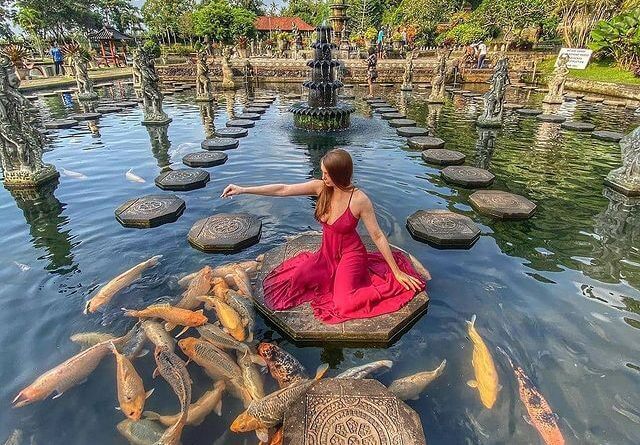
Tirta Gangga Water Palace is a popular major tourist destination in the eastern part of Bali, Indonesia. The palace was completed in 1946 by the last king of Karangasem, Anak Agung Anglurah Ketut Karangasem. It is a lovely complex of pools, fountains, and gardens nestled among lush green rice terraces and bordered by hills.
The water palace is notable for its gorgeous and elaborate Balinese architecture, which combines Hindu and Chinese elements. The palace is built around a natural spring that feeds three different pools, each with its own distinct personality and architecture.
The palace’s highlight is the first and largest pool, which is filled with crystal clear water teamed with koi fish. The second pool is the most sacred and is encircled by statues of mythical creatures. The third pool is a smaller, more secluded pool ideal for peaceful reflection and relaxation.
Aside from the pools, the palace has various exquisite fountains, stone carvings, and Hindu deity statues. The lovely gardens filled with brilliant flowers, coconut palms, and other tropical flora can be enjoyed by visitors as they stroll about the royal grounds.
Tirta Gangga Water Palace is not just a lovely tourist destination, but it also has cultural and religious significance for the Balinese. It is regarded as a spiritual healing center and is frequently utilized for religious ceremonies and rituals.
Tirta Gangga Water Palace is a must-see for anyone interested in Balinese culture and architecture, or who simply wants to escape the rush and bustle of daily life.
Tukad Cepung Waterfall
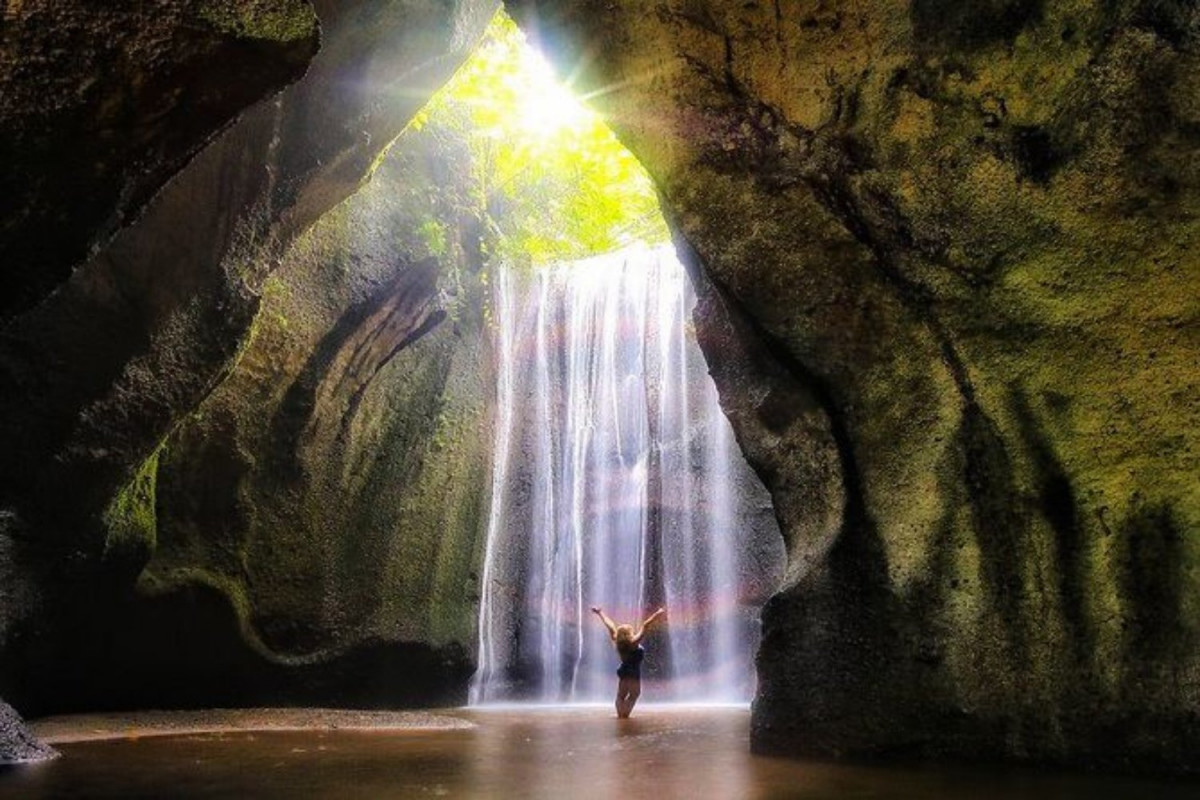
Tukad Cepung Waterfall is a hidden gem in Bali, Indonesia, located in the town of Tembuku, Bangli regency. It is a natural waterfall concealed inside a cave that is one of the island’s most remarkable and gorgeous waterfalls.
A stream passes through a short canyon and cascades into a pool below to make the waterfall. The waterfall is surrounded by steep rocks, and the sun’s rays filter through the narrow entrance of the cave, illuminating the cascade and the lake below.
Visitors must travel down a rough and slippery route through the lush jungle for about 15 minutes to reach the waterfall. The hike can be difficult, but it is well worth it for the breathtaking views of the waterfall and natural environs.
The greatest time to visit Tukad Cepung Waterfall is early in the morning when the sun’s rays are at their brightest and create the most magnificent light show. It is also less busy at this time, allowing tourists to experience the waterfall’s magnificence in private.
Guests can relax in the cool, soothing water of the pool below the waterfall. By the waterfall’s entrance, there are several tiny booths selling drinks and food.
Finally, Tukad Cepung Waterfall is a one-of-a-kind and spectacular location that nature enthusiasts and adventure seekers visiting Bali should not miss.
We appreciate your interest in our Lempuyang Temple Bali Tour! We think you’ll never forget your trip to the magnificent Lempuyang Temple (Gate of Heaven), the tranquil Tirta Gangga Water Palace, and the beautiful Tukad Cepung Waterfall. Your trip through the heart of Bali will be safe and unforgettable thanks to our skilled and hospitable guides.
Don’t pass it up this chance to see some of Bali’s most breathtaking sights. Make your reservation right away, and we’ll take you on an unforgettable journey!
Tour Itinerary
08:00 – Pick up at the hotel
11.00 – Visit Lempuyang Temple (Gate of Heaven)
13.00 – Visit Tirta Gangga Water Palace
14.00 – Lunch
15.30 – Visit Tukad Cepung Waterfall
16.30 – Back to the hotel
18.00 – Arrive at the hotel
Area Covered for Pick Up
Seminyak, Legian, Kuta, Nusa Dua, Jimbaran, Pecatu, Sanur, Ubud, Canggu, Denpasar, Benoa Harbour, Airport.
Please contact us for pick up in the different area.
Booking and Payment
- Fill in and submit the booking form
- Payment is Cash to your driver
-
DepartureHotel/ Villa
-
Departure Time8:00 AM
-
Return Time6:00 PM
-
IncludedPrivate tourComfortable Car with Air ConditionerSpeaking English DriverPetrol for carEntrance Fee TicketsMineral waterParking feesGovernment taxes
-
Not IncludedPersonal expenses
Similar Tours
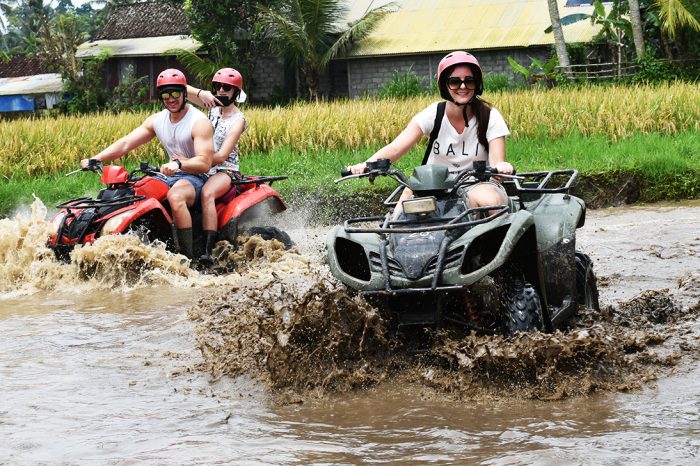
From IDR 800K
ATV Bali Tour And Bali Swing Tour
ATV Bali Tour and Bali Swing Tour are two popular outdoor activities in Bali, Indonesia, offering visitors the opportunity to experience the island’s natural beauty and rich culture.
ATV Bali Tour is an off-road vehicle adventure tour through the scenic landscapes of Bali. Visitors are equipped with safety gear and are guided by experienced instructors as they explore the island’s off-road trails and scenic landscapes. Tours typically include visits to traditional villages, rice paddies, and lush jungles, allowing visitors to experience rural Bali life and culture up close. Suitable for all ages and skill levels, ATV Bali tours are a great way to experience the island’s natural beauty.
The Bali Swing Tour, on the other hand, is an exhilarating activity to swing in Bali’s lush jungle. The tour includes a visit to Bali Swing Park where visitors can choose from different types of swings and choose where they want to swing. Swings range from the simple, offering a gentle rocking motion, to the more adventurous, swinging over cliff edges and offering stunning views of the valley below. The Bali Swing Tour also has several Instagram-worthy photo spots, such as the swallow’s nest and heart-shaped photo frames, making it a popular activity among social media enthusiasts.
Both ATV Bali Tours and Bali Swing Tours offer visitors a unique and unforgettable way to experience the natural beauty and cultural richness of Bali. Popular with families, groups of friends, and solo travelers of all ages and skill levels.
Place to Visit
ATV Ride Adventure
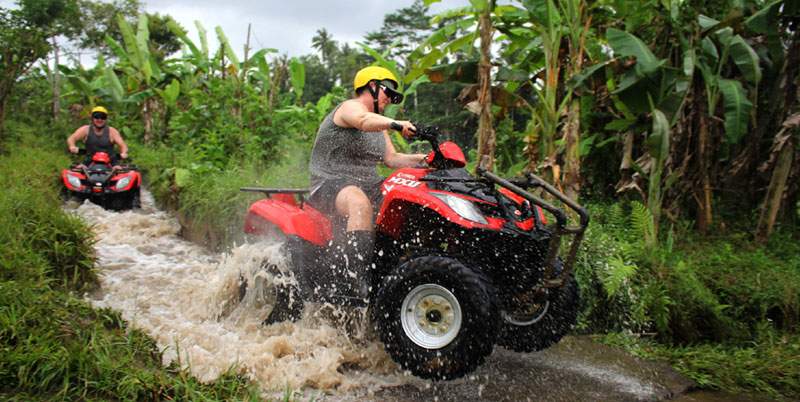
Bali is known for its stunning natural beauty, rich culture, and adventurous activities. The island is a popular tourist destination with millions of visitors each year. ATV Ride Adventure is one of the many exciting activities that attract tourists to Bali. It offers an exciting and unique way to experience the island’s rugged terrain, scenic landscapes, and rich culture.
ATV ride adventure is an important activity for Bali’s tourism industry. Tourism makes an important contribution to the island’s economy, providing employment opportunities and generating income for the local community. This activity is also eco-friendly as the tour is designed to have minimal impact on the natural environment. ATV Ride Adventure operators work closely with local communities and government agencies to ensure that activities are conducted in a responsible and sustainable manner.
Additionally, an ATV ride adventure is a great way to experience Bali’s rural life and cultural heritage. This tour takes participants through traditional villages, paddy fields, and lush jungles to get to know the rich culture and history of the island. Participants can interact with locals and learn about their way of life. An ATV ride adventure is not only an adventure sport but also an educational and cultural experience.
Safety must come first while beginning an ATV Bali Tour. Visitors must follow a safety briefing before starting an ATV riding adventure. The tour’s fundamental standards, norms, and safety precautions are covered at the briefing. The briefing also covers possible hazards, emergency procedures, and information about the terrain. To guarantee their own and others’ safety, it is strongly urged that participants pay close attention to the safety briefing.
Participants will receive ATV driving instructions following the safety briefing. This is to make sure that they feel at ease and self-assured when operating the ATV. The instructor will go through how to operate the ATV’s throttle, brake, and steering as well as give advice on how to navigate various sorts of terrain, including slopes, curves, and water crossings.
Helmets, gloves, and goggles are among the safety gear that is given to participants. The instruments were created to protect the users against potential dangers and harm. Throughout the tour, the helmets must be worn at all times. While the goggles shield the eyes from dust, dirt, and insects, the gloves help you maintain a better hold on the handlebars. All safety equipment is kept up to date and in good working order by the owners of the ATV ride adventure.
The ATV Bali Tour starts with an adventure ride through rice paddies, a jungle, and a river after participants have received a safety briefing and ATV driving instructions. This exhilarating journey offers the chance to discover Bali’s stunning and varied terrain while enjoying the exhilaration of operating an ATV.
The tour will stop at rural communities and picturesque views along the way. Participants can learn more about the local way of life while taking in the breathtaking sights of Bali’s surroundings at these sites.
In addition, there are opportunities to ride through difficult terrains like steep hills, rocky trails, and shallow streams on the ATV Bali Tour. The participants will have a thrilling and adventurous experience thanks to these difficult ride segments.
Jungle Swing at Bali Swing
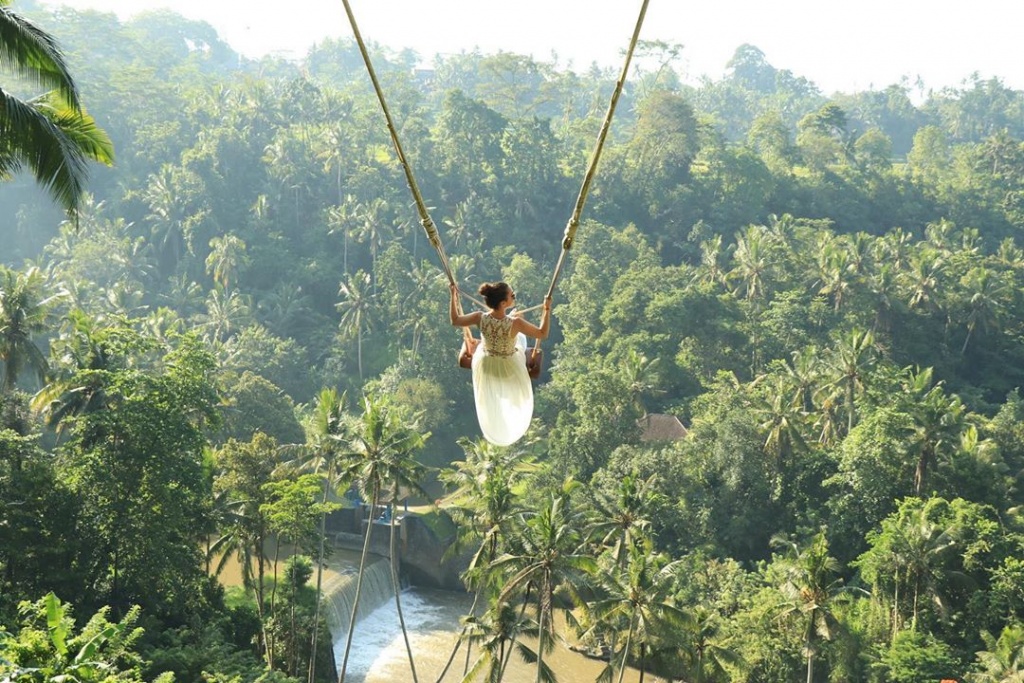
The thrilling jungle swing at Bali Swing whisks you high over the jungle’s treetops and provides breathtaking panoramic views of Bali’s natural splendor. There are numerous swing options, each providing a distinctive experience and level of thrill.
The strong materials used to construct the swings are intended to assure your safety while also delivering an exhilarating experience. You will be safely fastened to the swing via a harness, allowing you to swing without any worries.
For those who wish to take in the view without getting too excited, the most well-known swing is the traditional Bali swing, which offers a slow, peaceful swing. Couples will enjoy the more private swing experience provided by the romantic swing.
The extreme swing is a must-try if you’re searching for a more exhilarating experience. A breathtaking view of the jungle below is provided as you swing out over the cliff’s edge on this swing.
There are other nests and photo locations in addition to the swings where you may take lovely pictures of yourself amidst the stunning Balinese nature.
Overall, our tour package is an ideal choice for anyone seeking an unforgettable experience in Bali. Whether you are a beginner or an expert rider, our ATV Bali tour caters to all skill levels. For those seeking an adrenaline rush, the Jungle Swing at Bali Swing is a must-try experience. So, book your spot today and get ready to immerse yourself in Bali’s natural beauty and adventure.
The ATV Bali Tour and Bali Swing Tour are two of the most thrilling and memorable experiences you can have on the beautiful island of Bali. From the breathtaking views of the lush green forests and rice paddies, to the adrenaline rush of riding an ATV and swinging high above the treetops, these tours offer an adventure like no other.
Not only do you get to explore the natural beauty of Bali, but you also get to immerse yourself in the local culture and traditions. Our friendly and knowledgeable guides will share their insights and stories, making the experience even more meaningful.
So why wait? Book your ATV Bali Tour and Bali Swing Tour now and make memories that will last a lifetime. Whether you’re traveling with friends, family, or on your own, this is an experience that you don’t want to miss. We guarantee that you’ll leave with a smile on your face and a newfound appreciation for the magic of Bali. Thank you for considering our tours, and we hope to see you soon!
Tour Itinerary
08:00 – Pick up at the hotel
10.00 – Enjoy 2 Hours ATV Ride Adventure
12.30 – ATV Ride Finish and enjoy lunch
13.30 – Lunch finish and continue the tour
14.30 – Enjoy Jungle Swing at Bali Swing
16.30 – Back to hotel
18.00 – Arrive at hotel
Tour Prices :
1 person : IDR 1,300,000
2 persons : IDR 975,000/person
3 persons : IDR 875,000/person
4 persons : IDR 825,000/person
5 persons or More : IDR 800,000/person
Area Covered for Pick Up
Seminyak, Legian, Kuta, Nusa Dua, Jimbaran, Pecatu, Sanur, Ubud, Canggu, Denpasar, Benoa Harbour, Airport.
Please contact us for pick up in different area.
Booking and Payment
- Fill in and submit the booking form
- Payment is Cash to your driver
1 day
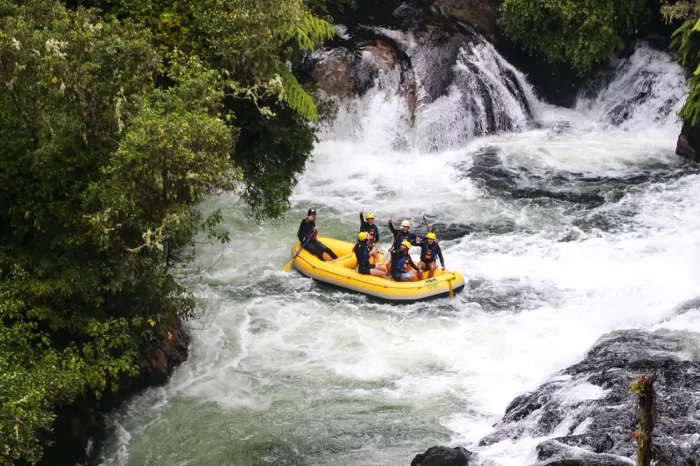
From IDR 250K
Ayung River Rafting Ubud Tour
Ayung River Rafting Ubud Tour is a popular tourist activity that offers a thrilling adventure through the rapids of Bali’s longest river. Located in the heart of Bali, this activity is ideal for those seeking an exciting and fun-filled experience amidst the island’s natural beauty. The journey is an unforgettable experience as participants paddle through lush rainforests, cascading waterfalls, and beautiful gorges. Ayung River Rafting in Ubud promises a unique and adventurous way to explore Bali’s beautiful scenery while also providing a great workout and a sense of achievement.
Ayung River Rafting Ubud Tour promises a thrilling experience full of adventure, natural beauty, and adrenaline. Participants can feel the rush of adrenaline as they traverse the river’s Class II and III rapids, surrounded by spectacular scenery such as tumbling waterfalls, lush green woods, and breathtaking gorges. The journey also provides a unique opportunity to discover Bali’s natural splendor, where travelers can see exotic animals such as monkeys, birds, and fish. The event is ideal for individuals looking for an adventure in the great outdoors and gives an unforgettable experience that will be remembered for a lifetime.
Tour details
Duration of the tour
The duration of the Ayung River Rafting Ubud Tour typically ranges from 2-3 hours, depending on the chosen package and itinerary. This includes time spent on preparation and safety briefing, transportation to and from the river, and the actual rafting experience. However, it’s important to note that the duration may vary depending on factors such as weather conditions, river flow, and the pace of the participants. Some tours also include additional activities such as visits to nearby waterfalls or stop for lunch, which can extend the duration of the tour.
Rafting route
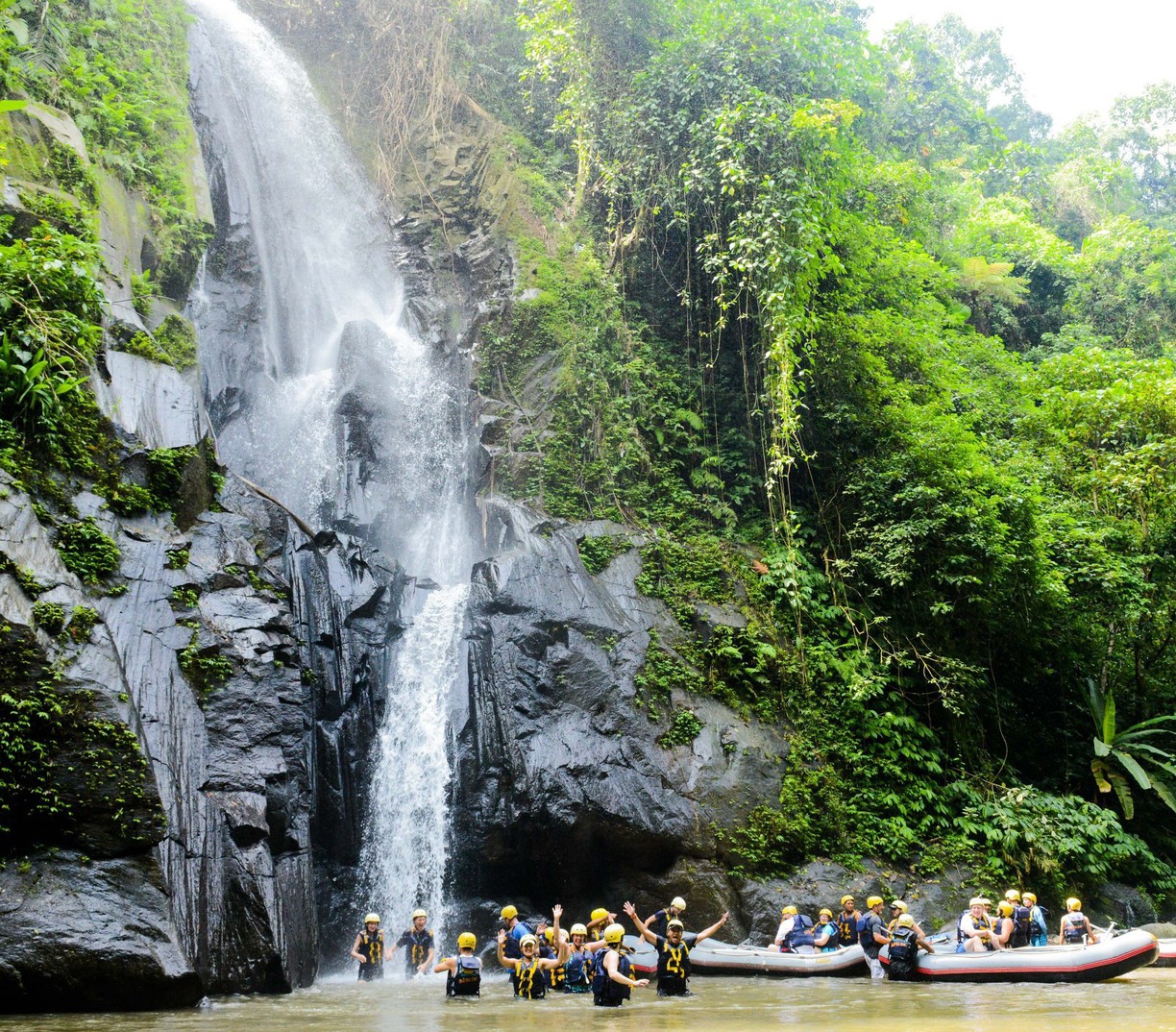
The Ayung River Rafting Ubud Tour route covers a distance of about 10 km in class II to III rapids. The route takes participants through breathtaking natural landscapes, including lush rainforests, cascading waterfalls, and scenic canyons.
The journey begins on a calm river, giving participants time to familiarize themselves with the equipment and paddling. Further along the route, participants will encounter thrilling rapids that will test their paddling skills and provide an adrenaline rush.
Along the way, participants will also have the opportunity to enjoy the natural beauty of Bali, along with the chance to catch a glimpse of exotic wildlife such as monkeys, birds, and fish. Participants can also take a break from rafting to swim in the refreshing river water or bathe in a waterfall.
The Ayung River Rafting Ubud Tour Route also has several attractions, including a short trek to a trailhead where participants can enjoy panoramic views of the surrounding countryside.
Overall, the route offers an exciting and unforgettable experience, showcasing the natural beauty of Bali’s longest river.
Safety precautions and requirements
The Ayung River Rafting Ubud Tour is generally safe, but it’s important to follow safety precautions to ensure a safe and enjoyable experience. Some common safety precautions and requirements include:
- Age limit: Minimum age requirement of 7-8 years old.
- Physical fitness: Participants should be physically fit and in good health to be able to paddle through the rapids.
- Swimming ability: Participants should be able to swim to ensure their safety in case they fall off the raft.
- Safety briefing: Before the tour, a professional guide will provide a safety briefing that covers the proper use of equipment, paddling techniques, and emergency procedures.
- Safety equipment: Participants must wear a life jacket and helmet at all times during the tour.
- Weather conditions: The tour may be canceled or rescheduled in case of extreme weather conditions, such as heavy rain or flooding.
- Follow instructions: Participants must follow the instructions of the guide and be alert during the tour to avoid accidents.
- Medical conditions: Participants with medical conditions such as heart problems, pregnancy, or recent surgeries should consult with their doctor before taking the tour.
It’s important to note that participants should always follow the guidelines provided by the tour operator to ensure a safe and enjoyable experience.
What to wear and bring
It is important to bring appropriate clothing and necessary items to enjoy your Ayung River Rafting Tour in Ubud comfortably. Here are some tips on what to wear and what to bring during your tour.
- Clothes: Please come in clothes that you don’t mind getting wet. Quick-drying clothes such as swimsuits, rash guards, thin T-shirts, and shorts are recommended. Avoid clothes that can get heavy when wet, such as jeans and cotton shirts.
- Footwear: Wear sturdy footwear with good grips, such as sandals or sneakers. Avoid wearing flip-flops or open-toed shoes.
- Sunscreen: Please apply sunscreen to all exposed skin prior to the tour. Wear a hat, sunglasses, or a visor to protect your face from the sun.
- Waterproof bag: Bring a waterproof bag to store valuables such as cameras, mobile phones, and wallets.
- Towel: Please bring a small towel to wipe your body after the rafting experience. Water: Bring a water bottle to stay hydrated during the tour.
- Change of clothes: Please bring a change of clothes after the tour.
- Repellent: Apply repellent to prevent insect bites.
It is also important to follow the tour operator’s safety guidelines and follow the tour guide’s instructions. By following these tips, you can make Ayung River rafting a safe, comfortable, and enjoyable experience on your Ubud tour.
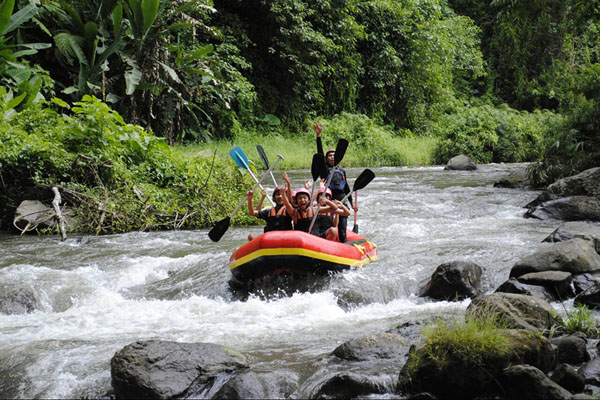
Booking The Ayung River Rafting Ubud Tour is a great way to experience the natural beauty and excitement of Bali. With breathtaking scenery, challenging rapids, and opportunities for adventure, Ayung River Rafting is an experience you won’t soon forget.
Book this tour to explore Bali’s lush rainforests, canyons, and waterfalls from a unique perspective. Feel the adrenaline rush as you navigate the exhilarating rapids of the Ayung River and feel the refreshing water on your face.
Whether you are a seasoned adventurer or a beginner, Ayung River Rafting in Ubud is an experience suitable for everyone. With experienced guides, high-quality equipment, and a commitment to safety, you can enjoy your trip with peace of mind while leaving the details to the professionals.
If you are looking for an unforgettable adventure in Bali, book The Ayung River Rafting Ubud Tour now. You will create memories that will last a lifetime and have experiences that you will always cherish.
Tour Prices :
1 Person : IDR 600.000
2 Persons : IDR 375.000/ person
3 Persons : IDR 300.000/ person
4 Persons : IDR 275.000/ person
5 Persons or More : IDR 250.000/ person
Area Covered for Pick Up
Seminyak, Legian, Kuta, Nusa Dua, Jimbaran, Pecatu, Sanur, Ubud, Canggu, Denpasar, Benoa Harbour, Airport.
Please contact us for pick up in different area.
Booking and Payment
- Fill in and submit the booking form
- Payment is Cash to your driver
1 day
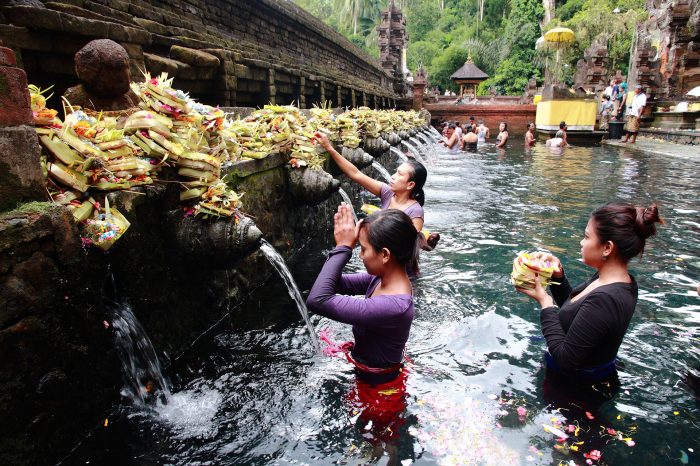
IDR 650K
Kintamani Tour Bali
The Kintamani Tour package is a must for anyone visiting Bali, Indonesia. This tour visits some of the most beautiful and culturally significant places in Bali. From traditional performances of barong and keris dances to exploring ancient temples, this tour offers a rich and authentic Balinese experience.
The tour begins with a visit to Barong and Keris’s dance performance. This traditional Balinese dance represents the eternal struggle between good and evil. A must-see performance that showcases Bali’s rich culture and traditions.
Next, the Kintamani Tour will take you to Tegallalang Rice Terrace in Ubud, a beautiful rice terrace in the heart of Bali. A perfect place for nature lovers and photographers. Stroll through the rice terraces and enjoy the stunning scenery while learning traditional Balinese farming methods.
The next stop on the tour is Kintamani village. Here you will enjoy a traditional Balinese lunch with breathtaking views of Batur Volcano and Lake Batur. It’s a great opportunity to taste local Balinese cuisine while enjoying the beautiful scenery.
The tour also includes a visit to the temple of the sacred spring Tirta Empul. The temple is known for its holy water, which is said to have healing properties. Visitors can take a dip in the sacred waters and participate in a traditional Balinese purification ceremony. The final stop of the tour is Goa Gajah Temple, an ancient temple set in a beautiful rainforest. Known for its intricate stone carvings, the temple is believed to have been built in the 11th century.
Kintamani Tour package is an excellent way to experience the rich culture and natural beauty of Bali. From the performance of traditional barong and keris dances to the stunning views of Ubud’s Tegalalang Rice terrace, this tour offers a unique and authentic Balinese experience.
Place to Visit
Barong and Keris Dance Performance
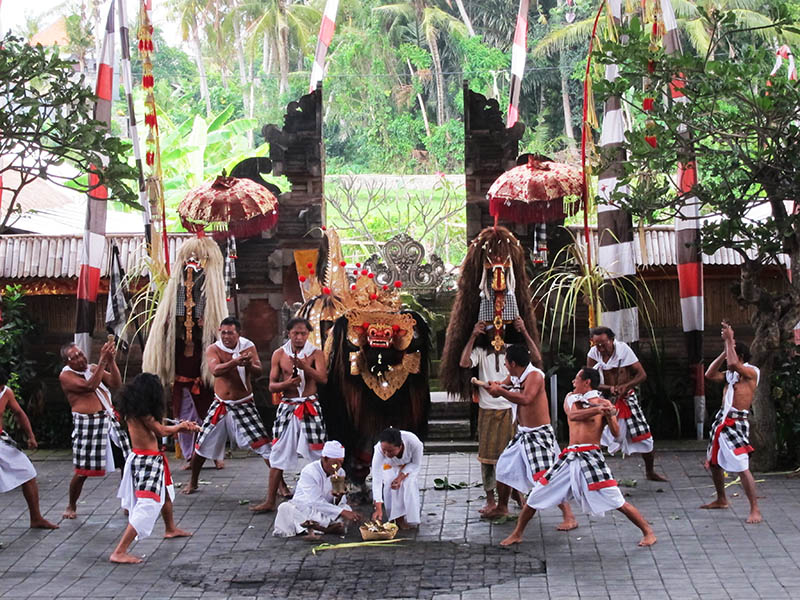
One of the most significant cultural events on the island is the Barong and Keris dance performance, a traditional Balinese dance. Whether there are formal ceremonies, festivals, or special occasions, this dance performance is typically presented in temples and public spaces.
Balinese mythology attributes good to the mythological Barong, while evil is symbolized by the ancient Indonesian dagger Keris. Barong and Keris are engaged in combat in the dance, and Barong is attempting to save the audience from Keris’ maliciousness. Character introductions are usually followed by a conflict between Barong and Keris at the start of performances.
The dance is complemented by traditional Balinese music performed on gamelan instruments, which adds to the performance’s enchanted mood. The dancers move gracefully and in unison while donning beautiful costumes.
Tegalalang Rice Terrace
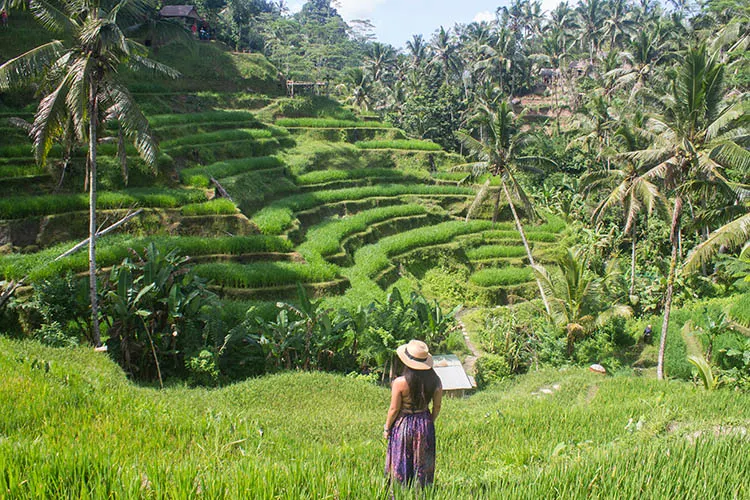
The Tegalalang Rice Terrace is one of Bali’s most famous and beautiful landscapes. The island’s long history of rice farming is attested to by the rice terraces, a cultural icon of Bali.
A complex irrigation system that has been passed down through generations of Balinese farmers was used to build the rice terraces. The method uses small channels to redirect water from rivers and streams into rice paddies. The procedure makes sure that the rice paddies have the right amount of water and nutrients for growing strong crops.
Visitors to the Tegalalang Rice Terrace have the chance to tour the terraces and discover how rice is traditionally farmed. The scenery makes for a beautiful backdrop for photos, thus there are numerous photo chances accessible.
There is an optional activity—the traditional Balinese swing—available for those seeking a distinctive experience. Visitors may swing above the rice terraces and take in the beautiful views from a unique vantage point thanks to the swing’s bamboo and rope construction.
It is advised to set aside at least an hour or two to tour the rice terraces and appreciate the natural beauty of the area. Also close are a number of local cafes and gift shops where tourists may try local food and buy souvenirs.
In general, those who are interested in Balinese culture and natural beauty should visit the Tegalalang Rice Terrace. It’s the ideal place to unwind and interact with the island’s rich cultural heritage thanks to its fascinating history, beautiful landscapes, and intriguing optional activity.
Kintamani Village
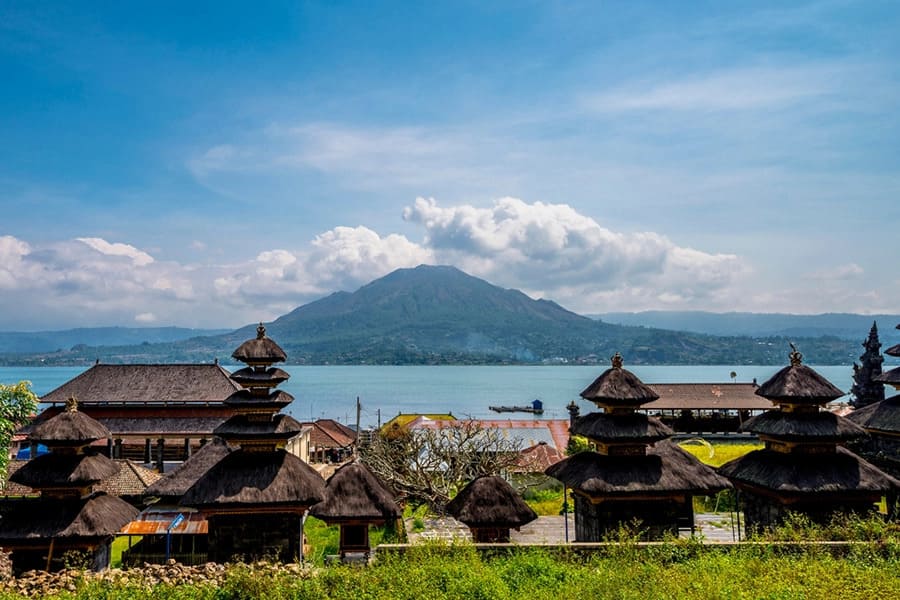
A small, traditional village called Kintamani Village may be found in Bali’s Kintamani district. The community is renowned for its outstanding natural surroundings, including breathtaking views of Mount Batur and Lake Batur, as well as its vibrant culture and history.
The Bali Aga people, one of Bali’s first residents, reside in the village and have managed to maintain their traditional way of life and rituals despite the area’s tremendous growth in tourism. Exploring the hamlet’s winding alleyways, going to the nearby markets, and taking in daily village life are all great ways for visitors to Kintamani Village to get a sense of the community’s distinctive culture and traditions.
Take a guided tour of the village, where tourists may learn about the history, culture, and way of life of the community from a local guide, as it is one of the most well-liked activities in Kintamani Village. The famed “babi guling” (roast suckling pig) and “ayam betutu” (chicken roasted with Balinese spices), which are available in neighborhood warungs, are only a couple of the traditional Balinese dishes that tourists can sample (small eateries).
Kintamani Village is renowned for its woodcarving and weaving traditions, and tourists can buy handcrafted fabrics and sculptures from regional craftspeople if they have an interest in handicrafts.
Visitors can get a rare look at Bali’s traditional culture and way of life at Kintamani Village. Guided tours of the village, tasting local cuisine, shopping for handcrafted fabrics and carvings, and discovering local markets are all optional activities.
Tirta Empul Holy Spring Temple
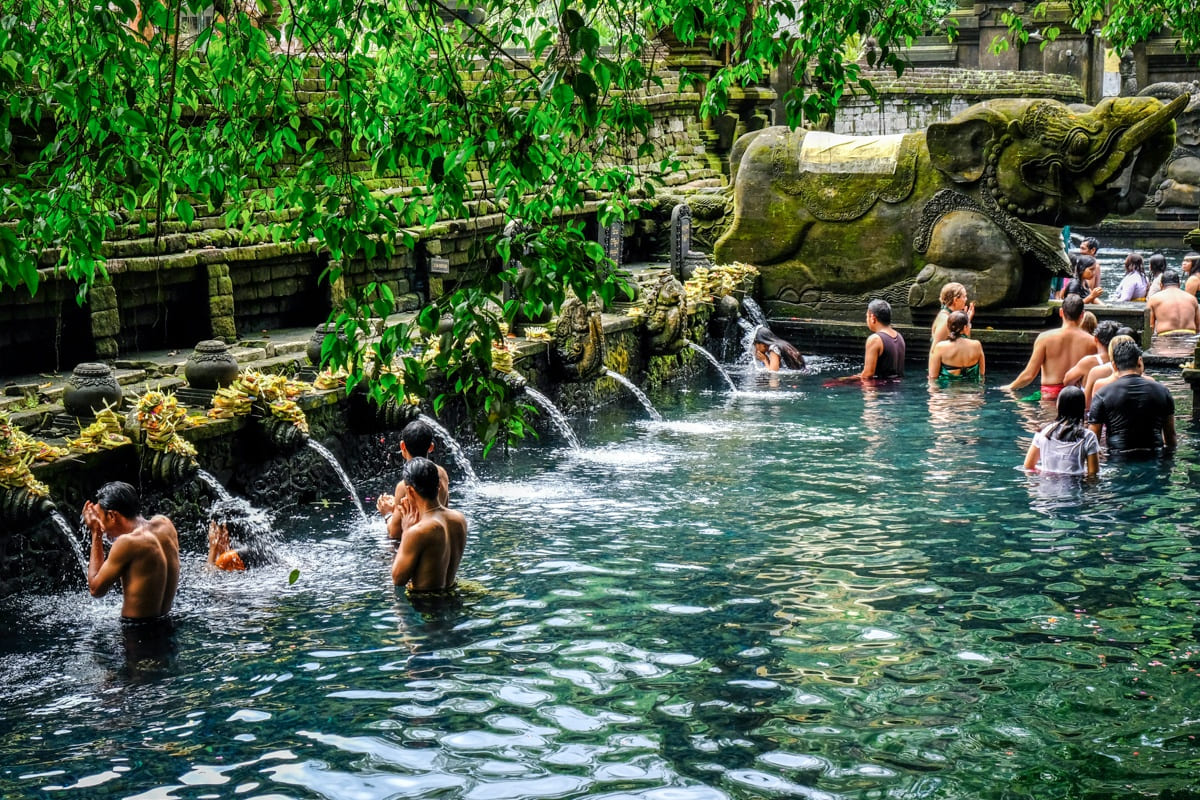
Tirta Empul Holy Spring Temple is a Hindu Balinese water temple located in the village of Tampak Siring, Bali. The temple was founded in 960 AD during the Warmadewa dynasty and was expanded during the rule of the Udayana dynasty in the 11th century.
The temple complex consists of three main sections: Jaba Pura (front yard), Jaba Tengah (central yard), and Jeroan (inner yard). Visitors must first pass through the Jaba Pura, which is the entrance to the temple. In the Jaba Tengah, visitors can see two pools of holy spring water where devotees perform a purification ritual called melukat.
The holy spring water is considered to have magical and curative powers. Balinese Hindus believe that water has the power to cleanse their soul and cure their illnesses. The temple’s name “Tirta Empul” means “holy water spring” in Balinese.
During the guided tour of the temple, visitors will be able to witness the purification ritual performed by devotees. The ritual involves a series of bathing and prayer sessions in the holy spring water. Devotees must wear traditional Balinese clothing and perform the ritual in silence to respect the sanctity of the temple.
Visitors can also see the temple’s unique architecture and intricate carvings, which depict scenes from Hindu mythology. The temple is surrounded by a beautiful garden with a lotus pond and is set against a backdrop of lush green hills.
The Tirta Empul holy spring temple is a significant cultural and spiritual site in Bali, offering visitors a glimpse into the Balinese Hindu culture and their beliefs in the magical powers of holy spring water. A guided tour of the temple is a must-do experience for those seeking to learn more about Bali’s unique cultural heritage.
Goa Gajah Temple (Elephant Cave Temple)
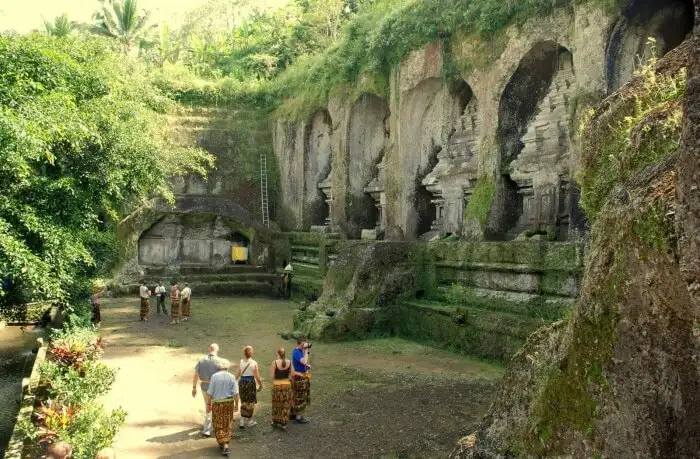
Hindu temple Goa Gajah Temple, often referred to as Elephant Cave Temple, is situated in Bedulu village, Bali. During the rule of the Balinese kingdom of Bedahulu, the temple is thought to have been constructed in the ninth century.
The history and significance of the temple are unknown, however, it is thought that Hindu priests used it as a place of meditation. The frightening beast that is carved into the cave’s entrance is thought to represent the underworld. There are several little recesses inside the cave that are thought to have been used for meditation.
The Indonesian name for the temple, “Goa Gajah,” means “Elephant Cave” in English. Unfortunately, the temple is devoid of any real elephants. The Petanu River, once known as the Elephant River, flows adjacent to the temple, which is thought to be where the name came from.
The temple’s exquisite sculptures are one of its key draws. Two dwarf statues stand guard at the entrance to the temple, while carvings of several Hindu gods and goddesses adorn the entrance to the cave. Moreover, there are several symbols and scenes from Hindu mythology carved into the cave’s inside.
Visitors may explore the cave and its surroundings while taking a guided tour of the temple. The tour will provide information about the temple’s background and importance as well as the significance of each carving.
A Buddhist stupa and a swimming pool are two other buildings that visitors may observe within the temple complex. Visitors may take a leisurely stroll around the verdant garden that surrounds the temple to take in its stunning surroundings.
A unique and remarkable temple, Goa Gajah Temple provides tourists with a window into Bali’s rich cultural past. Anybody interested in Balinese history and culture must visit the temple because of its elaborate carvings and enigmatic past. To truly comprehend the temple’s significance and beauty, a guided visit is strongly advised.
Take advantage of our Kintamani Tour to discover Bali’s cultural and natural attractions! See the majestic Tegalalang Rice Terrace, take in the serenity of Tirta Empul Holy Spring Temple, and be mesmerized by the Barong and Keris Dance.
Enjoy a scenic journey through Kintamani Village while learning about the mysticism and history of Goa Gajah Temple, also known as the Elephant Cave Temple. You will have an experience you won’t forget thanks to our skilled guide. Make Kintamani Tour reservations right away to make lifelong experiences!
Kintamani Tour Itinerary
08:00 – Pick up at the hotel
09.30 – Watching Barong and Keris Dance Performance
11.00 – Visit Tegalalang Rice Terrace
13.00 – Visit Kintamani Village
13.30 – Enjoy Lunch at Kintamani
15.00 – Visit Tirta Empul Holy Spring Temple
16.30 – Visit Goa Gajah Temple (Elephant Cave Temple)
17.30 – Back to the hotel
18.30 – Arrive at the hotel
Area Covered for Pick Up
Seminyak, Legian, Kuta, Nusa Dua, Jimbaran, Pecatu, Sanur, Ubud, Canggu, Denpasar, Benoa Harbour, Airport.
Please contact us for pick up in the different area.
Booking and Payment
- Fill in and submit the booking form
- Payment is Cash to your driver
1 day
